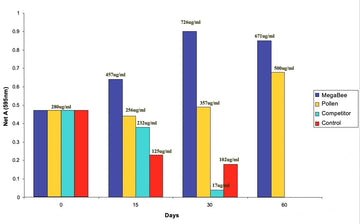RESEARCH:
In our opinion, products are worthless without proven results.
We put MegaBee through a variety of tests both in the lab & in the field.
Scroll down to see a selection of studies
In our opinion, products are worthless without proven results.
We put MegaBee through a variety of tests both in the lab & in the field.
Scroll down to see a selection of studies
In our opinion, products are worthless without proven results.
We put MegaBee through a variety of tests both in the lab & in the field.
Scroll down to see a selection of studies
Note: You will see other products in the trials are not listed by their tradenames - and instead are described as "Diet A" or something similar. We did this out of respect for the products and their companies. What we will say, is that these other products are not "backyard beekeeper" mixes. They are some of the most well-known and respected products in the industry.
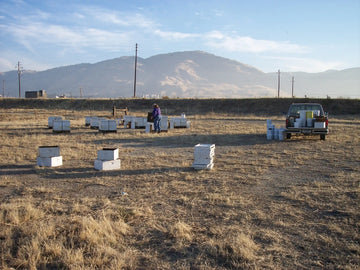
The California "Holding Yard" Trials
The study shows that patties were consumed at the same rate, but hives fed MegaBee consistently produced more brood & had larger colony sizes than the competitors. We often hear beekeepers talk about how fast a hive eats something, "I put the patty down and BOOM within days it was gone." But more important than how fast they consume something is what that food is able to do once eaten. MegaBee's success lies in its ability to maximize nutritional absorption and gives bees quality food that their bodies can put to work...not junk food they end up burning right through.
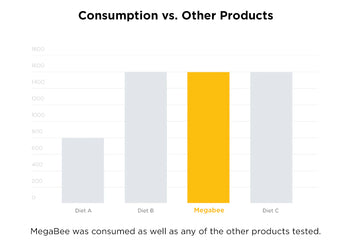
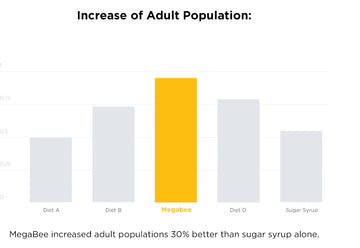
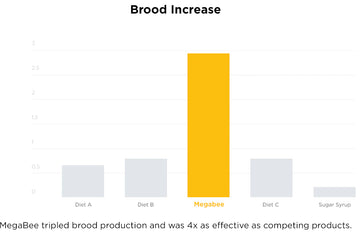
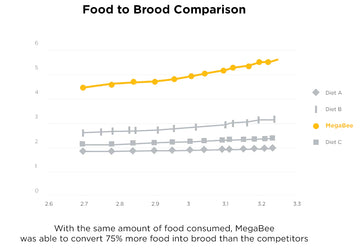
So now that we know bees can do more with MegaBee than other feeds, how far can we push the limits on their lifespan?
The Tucson Longevity Trials
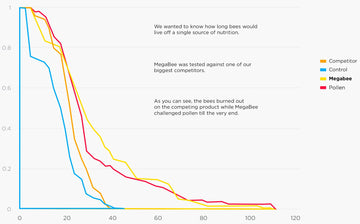
So what's our secret? How do they live so long?
When it comes to feeding bees, size matters.
Have you ever fed a patty only to see trash end up all over your bottom boards? Not with MegaBee.
It might not come as a shock, but a bees digestive tract isn't very long. From the time they eat something (until it winds up on your windshield) there is a limited window in which their bodies can break down food. One of MegaBee's keys is its ability to be processed quickly because of how fine we mill the product. Every batch of MegaBee is put through an intensive milling process to ensure it can be taken up easily and broken down quickly in the bees system.
Decrease the particle size -> Increase surface area -> Maximize nutritional aborption
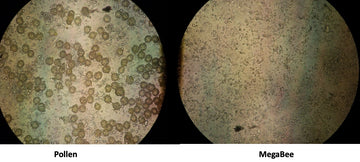
In designing MegaBee, we also focused on targeting what we call the honey bee's "fountain of youth."
Hypopharyngeal Gland Analysis
Research has shown these glands take approximately three days to develop in female worker bees and peak around the 6-10 day mark. We wanted to see how long these glands would stay viable when bees were fed MegaBee versus other products. The results are quite surprising.
WEEK 1
The early stages
By the end of the first week these glands are now fully developed. Bees at this stage are nurses, busy feeding immature bees and learning their way around the hive.
What we are looking for in these images are nice round, plump glands (which all appear to have).
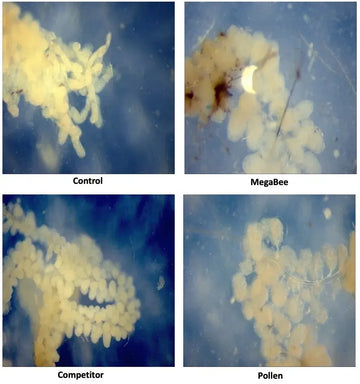
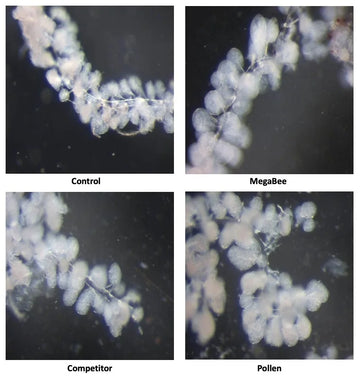
WEEK 2
The transition
By the end of the second week most workers start to transition from nursing to other roles in the hive. Here you can see some of the HP glands from the control group starting to shrink, indicating the window is closing for these bees to continue producing royal jelly.
WEEK 3
The dropoff
By the end of week 3 things really start to come into focus. HP glands in the control and competitor groups are now rendered completely unviable (note how they look like shrivled raisins). Bees in these groups are well on their way towards roles as foragers.
The group fed pollen does appear to be showing some signs of degredation in their HP glands, and the MegaBee group appears to still be producing royal jelly...on to week 4.
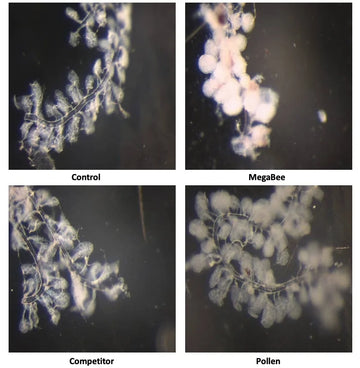
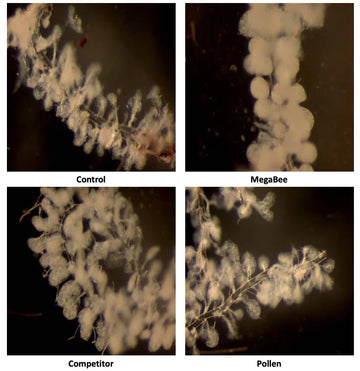
WEEK 4
The end
By this time, the only bees that appear to still show viable HP glands are the ones fed MegaBee. These bees four weeks in are still producing royal jelly, something largely unheard of.
Want to see how this looks in their blood? Check out the hemolymph tests done from this same study.
Hemolymph Total Protein Concentration
Bees received each diet, sugar syrup and water ad-libitum.
(we stopped the study after 60 days because all the control & competitors died)
